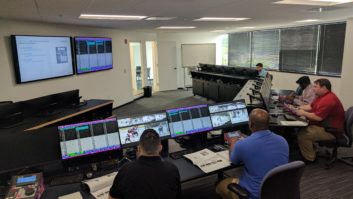
Let me start by saying that I completely understand the need for computer-based and virtual training in today’s retail environment. Shrinking margins and decreased labor has forced companies to re-think how they train their employees. In these fast-paced times with short attention spans, there is merit to these delivery systems. They are short, cost effective and merge nicely with the reliance of devices that exist today. Having said that…
I have been involved in developing and training retail employees for 25 years. Our company, over a 19 year period, has trained well over 500,000 people. Some received video- and computer-based training but most were trained live. I love all forms of training but to me there is nothing like being in a room with a group of people who, when done, reflect that they got it in their faces and body language.
Now it’s true that associates can take surveys after watching a video or taking computer-based training to show their company that they “got it,” but are they answering truthfully or are they writing what they think the company wants to hear? Tough to do that when you’re looking a participant eye to eye.
Dating websites are a perfect example. They’re great, but the face-to-face live meeting determines whether there is a spark or you tell your date “I have to get up early, let’s make it a short night.”
Here’s the case I want to make: Right now a challenge to brick-and-mortar retailers is online shopping. How does a retailer compete with the convenience of not having to leave the house to buy anything? Yes, a customer can shop online and in many cases do so more conveniently. The reason, however, to actually come into a store is the human interaction that a customer receives. They can talk to a live person who is there to listen and meet their needs. They’ll be greeted with a smile (O.K,, not always I admit) that says “I am here to help.” A customer can demo a product and get a feel for what it would be like in their home instead of just looking at a photo of a product and hoping it’s the right one. Human interaction, the give-and-take of a sale, is an advantage of shopping in a store vs. online.
So, how is the importance of this human interaction taught to employees? Through a TV or computer screen with zero human interaction. (Live chat boxes do not count.) The behaviors for sales and training are exactly the same. One is about selling a product; the other is about selling an idea. So if face-to-face selling is more effective than online selling, then can’t the same be said about face-to-face training?
The best way to illustrate that concept is to let employees model the behavior live. Tough to do virtually, and while most managers have every intention of making it happen after the computer training … reality often prevents it.
Another point is that videos, chat-box training (CBT) and virtual training are usually very short due to the attention spans mentioned earlier. Understandable. A live training can be anywhere from two hours to two days. Done right, keeping people involved and entertained makes keeping their attention a non-issue (our company tagline: “We don’t just train … we entertrain”). One of the benefits for the participants is the opportunity to network with their peers. They can learn from each other and ask challenging questions. Finally, when there is full participation for training, the return on investment (ROI) of the labor and venue cost is usually realized within two weeks of training (depending on the type of training. Leadership training takes longer to get ROI, but provides longer-term results).
So the question is, are you as a company willing to spend $1 to make a guaranteed $10 within a 30-day window?
Live training will generate incremental profit that may not have otherwise occurred. Make no mistake, this is not about live training instead of these other forms of training. They each have their strengths and should supplement each other, rather than replace one another. Just as customers are different and should be treated differently, employees are different and they each learn differently. Offering training options is the best way to deliver any training effectively. Showrooms tout the advantages of the in-store shopping experience vs. online experience to the consumer. It’s the same with training. Live interaction, in both cases, is more effective, and creates better brand and company loyalty while improving the customer and employee relationship. Case closed.
John Quattrucci is president of Stuart & Associates, a results-oriented consulting firm that has been helping major retailers and global manufacturers maximize revenue and profit for nearly 20 years. For more information, visit BetterSales.com.











